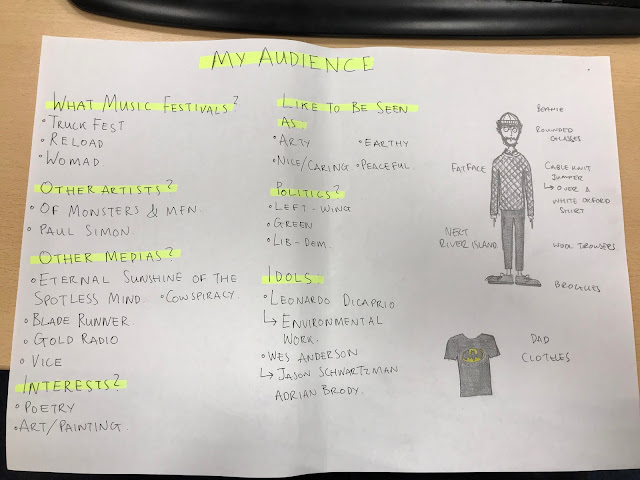I used the YouGov site in order to develop my model above- many of the points that I felt were suitably applicable, I have used in order to depict a more in depth and sufficient description, fulfilling descriptive criteria both through characteristics and aesthetic.
The audience that I would associate to Jens Lekman's 'An Argument With Myself', may be fairly wealthy or in a position of satisfaction in terms of living standards, when it comes to measuring their socioeconomic demographic; possibly placing them in the higher brackets such as C1, B or occasionally A. The idea behind this is that whilst a lot of my audience may be unaccounted for in this system as they may be younger, a large number of the audience will be of an older age- people who enjoy the nostalgic notions of Jens' music, with links to Paul Simon and Talking Heads. It is possible to link these type of listeners to a higher earning wage bracket as they are older and having been earning for longer.
I would also look at segmenting the market using the Channel 4 tribal separator. By using this I wish to target my younger audience by focusing on the 'hipster' tribe that is described by Channel 4. Their desire to be original and unusual may lead them to sway towards the retro vibes of Jens Lekman's originally Icelandic music. This way of profiling is quite effective for my music video, as a movement such as the 'Hipster' movement seek to be original and quirky; of which I believe my music video is apt.
I don't believe that the Young and Rubicam method of profiling is that effective for my audience, because I believe that whilst my audience could come under aspirers due to their fairly creative nature, I also believe that success is a key part to different people within that audience, especially when looking at a more successful, elder bracket of people within them.

